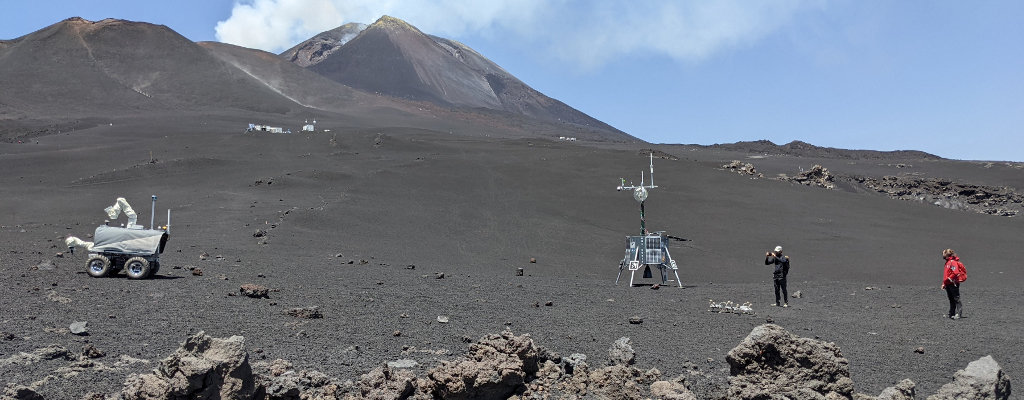July 20, 2022
The future of space exploration fundamentally depends on the use of robots and remote devices, however, more importantly than the robots themselves is the interaction between humans and robotic explorers. Jacobs University scientists have recently tested these interactions on the famous Mount Etna volcano in Italy- one of the most active in the world. The research project, led by geologist and professor Angelo Pio Rossi, is associated with the European Space Agency (ESA) and the German Aerospace Center (DLR).
Observations from the Moon and Mars show us that the surfaces heavily resemble the conditions at Mount Etna. There, the robots' task is to collect volcanic rock samples, analyze them and forward their results to a control room. They have to be able to find their way around rough terrain, navigate around rocks, climb steep slopes or cope with soft soils. Hardly any other area is as suitable for testing these skills on earth as the Sicilian volcano, Etna, with its lava landscape.
The scientists tested various robots and drones with different capabilities. In one scenario, astronaut Thomas Reiter steered a rover from his hotel room in Catania, 23 kilometers from the test site. This role-play simulated steering the rover from a lunar orbit. The goal was to identify relevant rock samples, pick them up by gripper arm and transfer them to a lander.
For the success of a mission, the accurate preliminary exploration of the planet's surface and its geology is crucial. What is the best landing site? Where do obstacles, such as insurmountable slopes or caves, create issues for the robot? These risks are evaluated with data collected and analyzed by Jacobs University scientists.
"I'm interested in building bridges between robotics and the science that supports it," Rossi said, "exploring the geology of an unexplored site and identifying representative, meaningful samples is far from trivial because we have limited knowledge of the environment and little time on a mission."
Exercises like those on Mt. Etna can be very helpful for future missions, finds the scientist, whose activities were supported by PhD candidates Javier Suarez Valencia and Giacomo Nodjoumi, as well as by geologists Professor Matteo Massironi and Riccardo Pozzobon from the University of Padova. The team also included several scientists from the National Geophysical Institute of Italy (INGV) in Catania and from Etna Observatory, namely Massimo Cantarero, Emanuela De Beni, Stefano Branca. "With this exercise we were able to build cultural and methodological bridges between different disciplines. Engineers and geoscientists have different approaches, which are highly complementary, but this complementarity needs to be practiced", Rossi summarized.
More info on Twitter:
#analog1
#RobotsOnEtna
Questions answered by:
Angelo Pio Rossi | Professor of Earth and Planetary Sciences
an.rossi [at] jacobs-university.de | Tel: +49 421 200-3153

